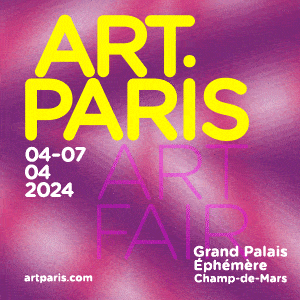Whitehot Magazine
May 2024
"The Best Art In The World"
"The Best Art In The World"
May 2024
May 2007, WM issue #3: Projections at University of Toronto Galleries

Projections at University of Toronto Galleries
by Ian Orenstein
Showing until June 17, 2007, at the University of Toronto Galleries, Projections, a retrospective, 1964-2007, of projection-based works in . These include: short films, still photographs and lights projected onto objects. “Who gets to call it art?” has already been answered. The real question is: “What have artists done with the medium of projection-based work?”
The opening day of the show, Easter Sunday, April 8, 2007, free buses went to the four participating venues. The show is at all three of University of Toronto campuses: Doris McCarthy Gallery (Scarborough), Blackwood Gallery (Mississauga), Justina M. Barnicke Gallery (Downtown Toronto) and University of Toronto Art Centre/UTAC (Downtown Toronto). Too bad the east and west campuses didn’t get the better pieces.
Vancouver based Rodney Graham had his work at more that one campus. Halcion Sleep (1994) is a short film of a man sleeping in a moving car. In Stanley Kubrick 1980 movie: The Shining, there is a long scene of a station wagon travelling across the screen. If Kubrick had shown us the car’s backseat could it have been a long scene of a man sleeping? Not only is this Graham piece dull; Kubrick had done a just as boring presentation 14 years earlier. Graham 1996 piece, of burning cinnamon on an electric element Coruscating Cinnamon Granules is more interesting. In this short film, with theatre seats provided, you get to watch: cinnamon cook, sparkle and then disappear.
Montreal’s, David Hoffos has only one piece (at the Barnicke), but it could be the best in the show. Made in 2005, a very realistic life size woman smokes near a small diorama with a little man dancing on a bluff. For this Scenes from the House Dream: Bachelor’s Bluff not only does he have projected images doing something, he made the diorama, showing he is more than just a photographer.
Adjacent to the Hoffos is Nathalie Melikian’s Science Fiction (2007): a film that has music and sound effects while a movie script scrolls a screen with concepts from Star Trek, Star Wars, and other sci fi flicks.
Also at the Barnicke was Janet Cardiff and George Bures Miller’s contribution from 1999: The Muriel Lake Incident, a western that had dialogue, sound and a story with the production values of commercial features. An elegant scaled down cinema completes the piece.
Ian Carr-Harris’s works at the UTAC are Empire Piece (1970-71) and Rozenstaat 8 part 1 and part 2 (1995). The first one is a projection of the words “Empire Piece” in white lettering on to a dark piece of wood. The other, which is in two parts, is: lights moving across a wall and a lit lamp, a table and an open book.
Murry Favro’s Still Life (1970) and Light Bulbs (1970) were better. The first was blank objects on a table whose illumination made them recognisable. For example a magazine shape became an issue of Scientific American. The other consisted of large light bulb like objects, having lights projected on them.
Another imaginative piece is the little man scratching his way through little glass houses. The houses are three dimensional objects and the man is a moving image. This piece: An Imaginary Situation with Truthful Behaviour (1988) was done by Wyn Geleynes born in Rotterdam.
Out at the Blackwood was the less imaginative 2002 work, by Mark Lewis, of a video of a London UK walkway: Children’s Games, Heygate Estate. A more creative walking film that was attributed to Jana Sterbak is Waiting for High Water (2005), at the McCarthy. You’d think this jerky triple screen projection that showed a lot of feet walking the streets of Venice, was filmed by a dog. Sterbak did place three cameras on a dog to shoot the footage. The film has a point: Venice streets get flooded when the water rises.
Acceleration (1971) by American born artist, David Askevold is another on the theme of open up the lens and film someone walking. The titling up the image doesn’t make it any more interesting.
The least interesting is Kelly Mark’s Commercial Space (2007): a pile of 9 televisions with nothing on.
Michael Snow’s contribution was mixed. His ubiquitous walking woman from 1965, was nothing new, but his Two Sides to Every Story (1974) was quite interesting. This is a projection of a young woman spray painting a circle and if you walk around this clear glass you can see the back and front simultaneously.
Krzysztof Wodiczko, born in Warsaw, , contributed dark still photos of large hands projected on to buildings the eponymous Projections (1981-1988). Why are these still photos more satisfying than moving pictures with nothing happening? Could it be we don’t expect as much from still photographs than we do from moving pictures?
As case in point: Judy Radul’s Downes Point (2005): two panorama screens projected on opposite walls. One screen a man yells orders to people in the other projection. When I saw this piece, not only did some fellow viewers have their arms crossed, but one of the actors, being ordered around on the screen, had his arms crossed too.
Do not miss Christine Davis’s “Drink Me” or Alice was beginning to get tired…. This slide show: of a woman eating pages, projected on to a bed of followers, is very beautiful.
Overall I recommend this show, but don’t expect much at the Scarborough or Mississauga sites. The better pieces are downtown.












